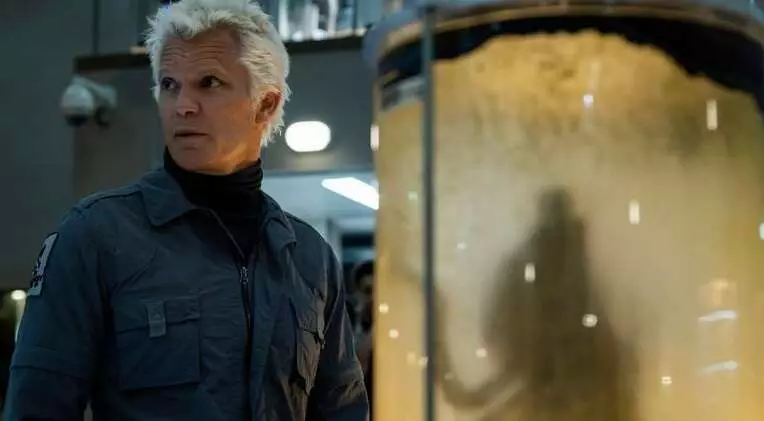The Alien franchise is a tapestry woven with bold strokes of innovation and stark contrasts. From Ridley Scott’s atmospheric horror of the original to James Cameron’s adrenaline-fueled sequel, each installment offers a distinct flavor of terror. Some fans fiercely defend their favorites, while others dismiss certain entries as misguided or overly stylized. The challenge lies in reconciling these differences and understanding the franchise as a living, evolving myth. What unites these films is their shared obsession with the unknown and the monstrous, yet each director’s unique vision has contributed to the series’ complex legacy. This diversity is both a strength and a complication, often provoking debate about which version truly captures the essence of horror horror, and which stray too far into spectacle or novelty.
The Mythology Reimagined: Adapting a Horrific Icon
At the heart of the franchise is the Xenomorph—a creature that embodies primal fear and biological mystery. Showrunner Noah Hawley’s approach to the forthcoming series reveals a conscious desire to revisit and invigorate this icon. His intent to “re-mystify” the creature demonstrates a recognition that, over time, the audience’s perception has been shaped by a series of predictable revelations. Each new iteration of the Xenomorph tends to escalate its terror, adding layers that sometimes diminish its sense of enigma. Hawley’s perspective reflects a refreshing ambition to strip away the accumulated familiarity and rediscover the creature’s primal horror. In doing so, he seeks to reignite the audience’s sense of wonder and fear—an essential ingredient for any enduring monster story.
The Aesthetic Divide: Retro-Futurism Versus Hyper-Advanced Tech
One fascinating aspect of Hawley’s commentary concerns the visual language of the series. He prefers the nostalgic retro-futurism of the original film because it evokes a sense of gritty realism that feels more immediate and tangible. This choice underscores an important philosophical stance: storytelling surfaces strongest when grounded in aesthetics that evoke a particular era’s hopes and fears. The sleek, sci-fi visions of Prometheus and its prequels, while visually impressive, can sometimes feel disconnected from the gritty horror that made the original film groundbreaking. Hawley’s focus on vintage design shows a respect for the raw, unsettling atmosphere that made Alien iconic—proof that aesthetics are fundamental to shaping the emotional impact of horror. It’s a reminder that sophisticated storytelling often hinges on what viewers see and feel, not just what they hear.
The Challenge of Reinventing a Classic Monster
Reimagining the Xenomorph is a daunting task. The creature’s lifecycle has been elaborately expanded, often pushing its scope into the fantastical—tall, monstrous, and continually evolving. This ongoing escalation risks diluting its primal terror, transforming it from a lurking horror into a living myth of endless possibilities. Hawley’s insights hint at a desire to shift the focus from shock to suspense, building on the creature’s mystery rather than revealing too much, too soon. This is a significant departure from recent trends in horror, where audiences have come to expect rapid escalation and visual spectacle. Hawley’s approach suggests that true horror lies in the unknown—what we don’t see, don’t understand, or can’t predict. That’s the core challenge: to respect the franchise’s brutal mythology while innovating enough to keep viewers on edge.
Rethinking the Franchise’s Future in a Changing World
The ongoing debates about the “best” Alien film reveal a deeper truth: horror’s vitality depends on its capacity for reinvention. The franchise’s zigzagging history—from gritty horror to blockbuster spectacle—has kept it relevant but also fractured. Hawley’s vision reflects a broader trend—a desire to reclaim the franchise’s original spirit amid a landscape that often favors big-budget spectacle over atmospheric dread. In an era shaped by the upheavals of COVID-19, which drastically altered film production and storytelling, the franchise faces an uncertain future yet remains ripe with potential for meaningful innovation. The challenge now is balancing nostalgia with new ideas, reviving audience fears while respecting the series’ roots. Hawley’s comments highlight that true strength lies not in retreading old ground but in daring to explore the unsettling unknown that makes Alien special—that elusive horror that seizes us and refuses to let go.
In this ongoing story of evolution, the Alien franchise proves that even a legendary horror icon can be revitalized by fresh perspectives that challenge conventions. It’s a testament to the enduring power of horror to adapt, surprise, and terrify anew.

